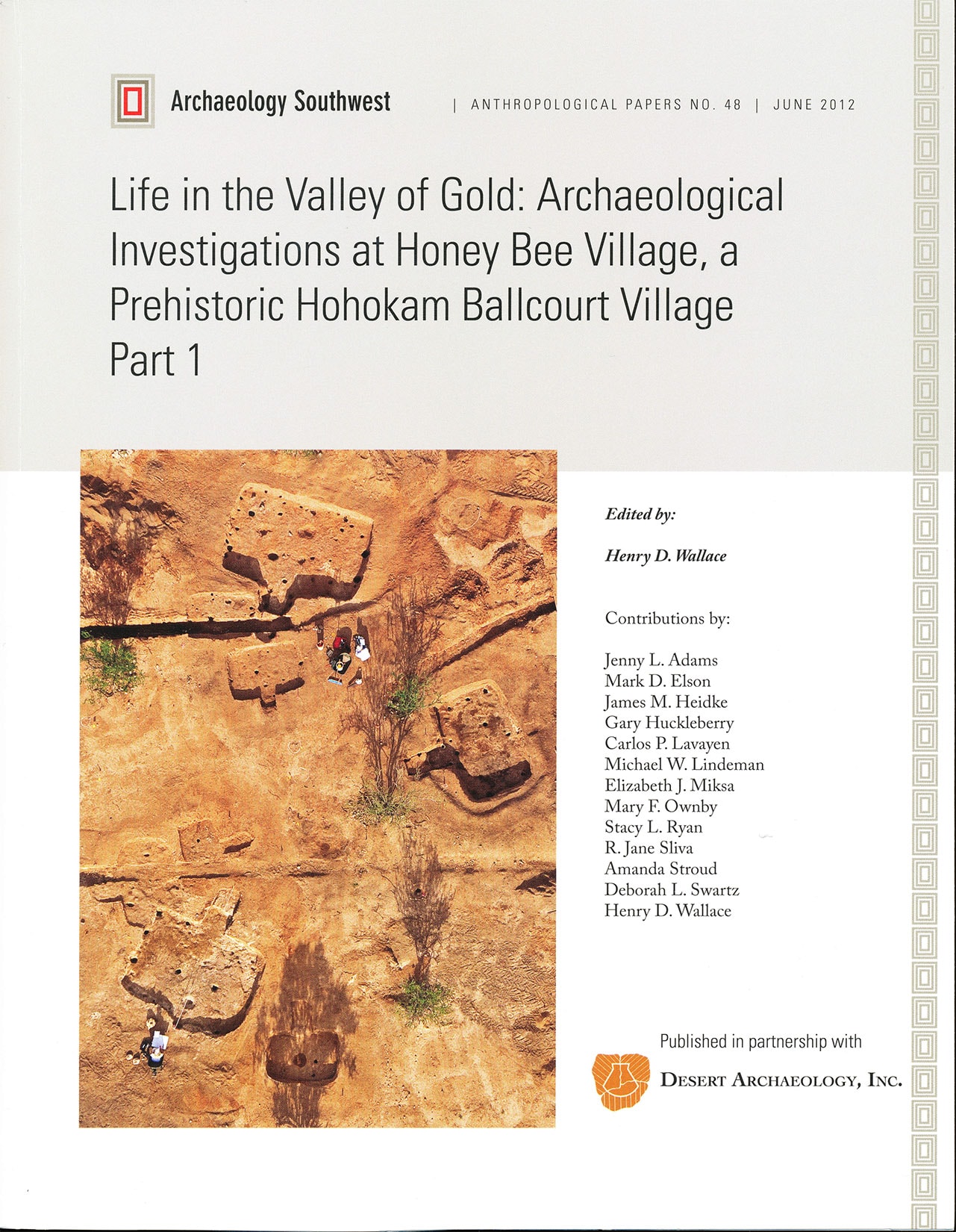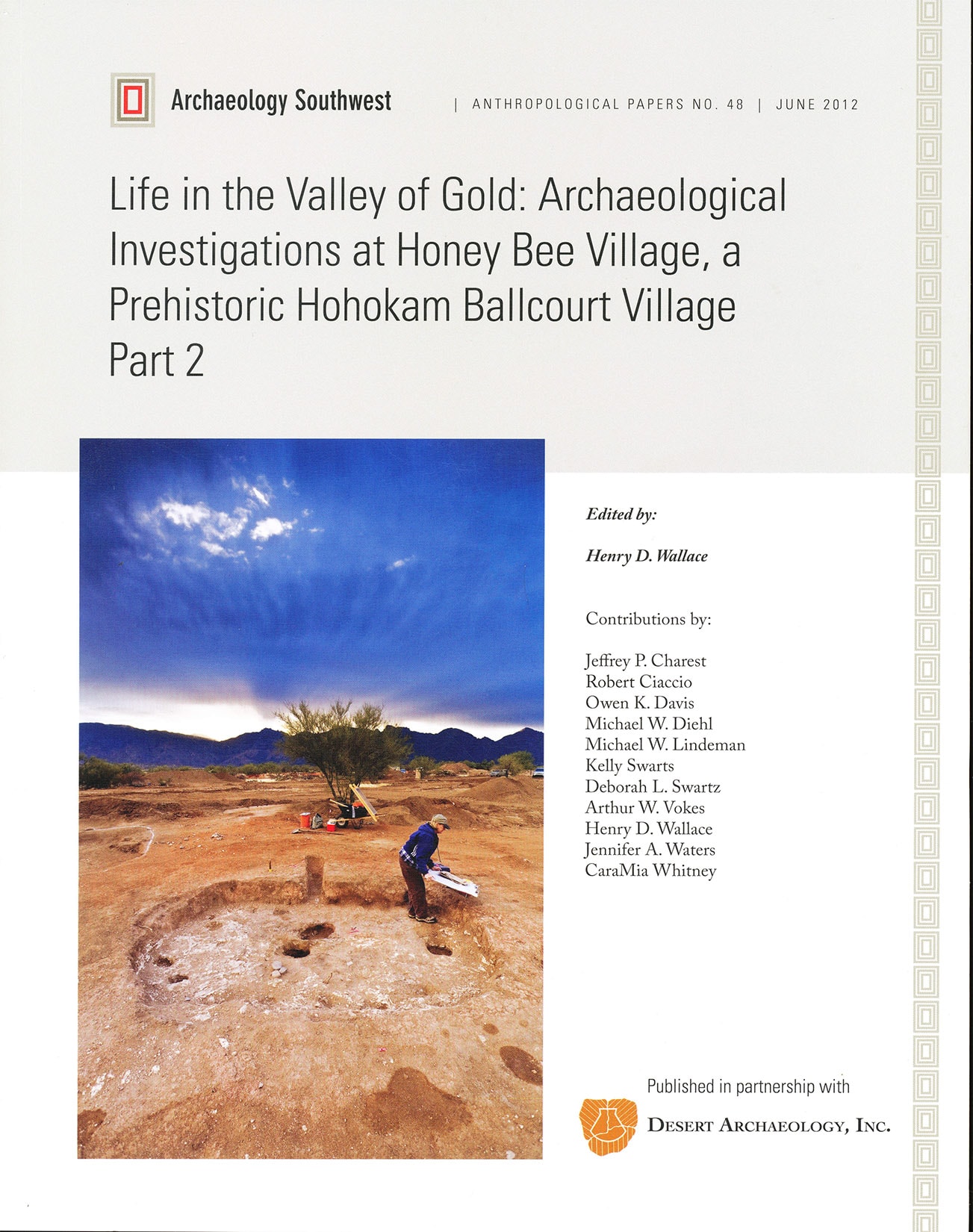Description
Life in the Valley of Gold: Archaeological Investigations at Honey Bee Village, a Prehistoric Hohokam Ballcourt Village, Parts 1 and 2 (AP48 Volumes 1 & 2)
Honey Bee Village was a sizeable prehistoric Hohokam village complete with a plaza, mounds, and ballcourt located in the Cañada del Oro Valley north of Tucson, Arizona. In 2006 and 2007, nearly three-quarters of the village was intensively excavated under contract with Pima County and Vistoso Partners. The core of the site is a 13-acre preserve that was tested in the 1980s. Outside the core area, the full plan of the village was revealed, resulting in the identification of 2,004 cultural features. Occupation ranged from late in the Tortolita phase to the early Tanque Verde phase, roughly A.D. 650-1200. Overall, 947 cultural features were fully or partially excavated, including 183 pit structures, possible structures, and adobe rooms, 207 human burial features, 11 animal burials, 24 trash mounds or concentrations, and 522 extramural features. Particularly interesting remains uncovered include a golden eagle burial and a Late Rincon phase plaza and plaza cemetery. The wide excavation coverage permitted an unusually complete view of a Hohokam village and of surface-subsurface comparisons.
The archaeological features and artifacts recovered are documented in this two-volume report. A large set of radiocarbon and archaeomagnetic dates is discussed. Household economic specialization and architectural practices are addressed. Cremation mortuary practices are reconstructed, and Hohokam perspectives on death and the dead are considered. The history and shifting settlement structure of the village are considered in relation to its nearby sister village, Sleeping Snake. Of special interest is the discovery that logs obtained from the Santa Catalina Mountains were used in house construction.
Additional archaeological data cited in the report are available at no cost for download as pdf files by clicking on the links below.
Links:
Ground Stone and Ecofact Data, Honey Bee Village, AZ BB:9:88 (ASM)
Jenny L. Adams, Desert Archaeology, Inc.
Cartographic Data for the Honey Bee Archaeological Project
Michael Brack, Desert Archaeology, Inc.
Pollen Data from Honey Bee Village, AZ BB:9:88 (ASM)
Owen K. Davis, University of Arizona
Macrobotanical Data from Honey Bee Village, AZ BB:9:88 (ASM)
Michael W. Diehl, Desert Archaeology, Inc.
Archaeomagnetic Sample Field Data Forms and Photographs of Sample Collection (27 MB)
Jeffrey L. Eighmy, Archaeomagnetic Services
Ceramic Data from Honey Bee Village, AZ BB:9:88 (ASM)
James M. Heidke, Desert Archaeology, Inc.
Radiocarbon Dating Results for the Honey Bee Archaeological Project
Darden Hood, Beta Analytic Inc.
Petrographic and Image Analysis of Plaster from Honey Bee Village
Carlos P. Lavayen and Mary F. Ownby, Desert Archaeology, Inc.
Archaeomagnetic Laboratory Results for the Honey Bee Archaeological Project
Stacey Lengyel, Illinois State Museum
Source Provenance of Obsidian from Honey Bee Village, AZ BB:9:88 (ASM), and Sleeping Snake, AZ BB:9:104 (ASM), Tucson Basin, Arizona
M. Steven Shackley,
Archaeological XRF Laboratory, University of California, Berkeley
Primary Feature Data, Honey Bee Village, AZ BB:9:88 (ASM)
Tyler S. Theriot and Deborah L. Swartz, Desert Archaeology, Inc.
Special Petrographic Report on Buff Ware from Honey Bee Village:
Hohokam Buff Ware from Honey Bee Village: Petrographic Analysis to Reveal Aspects of Technology and Provenance
Mary F. Ownby, Desert Archaeology, Inc.

